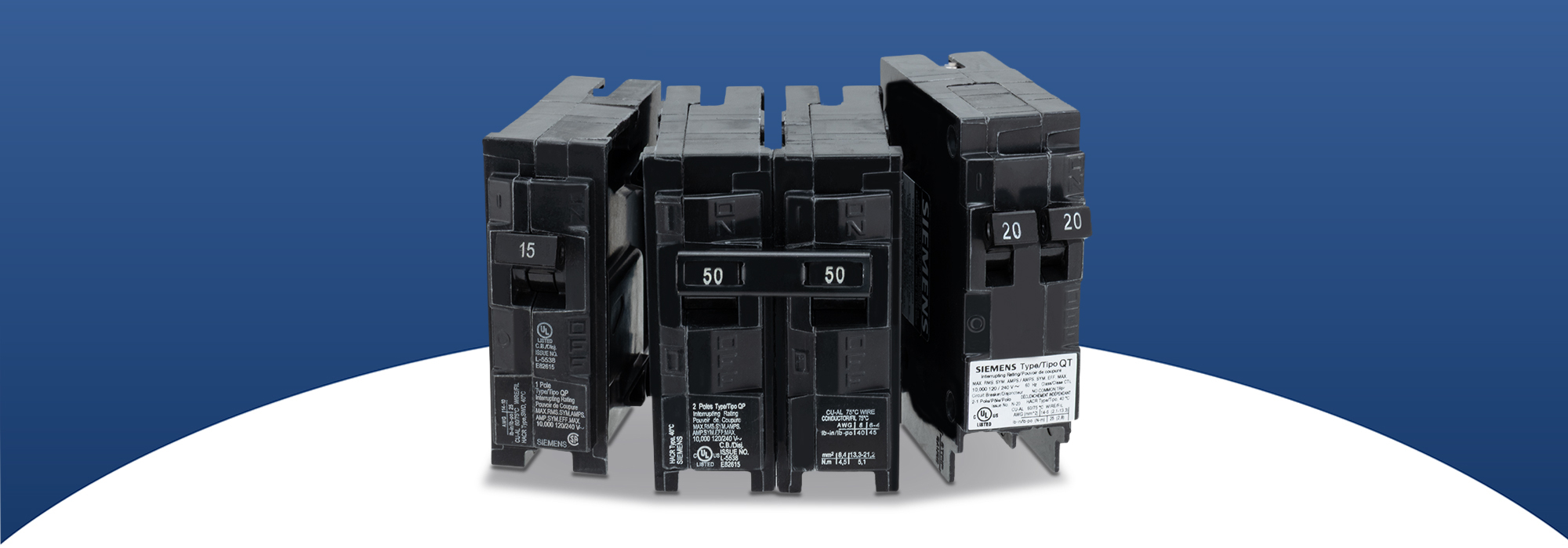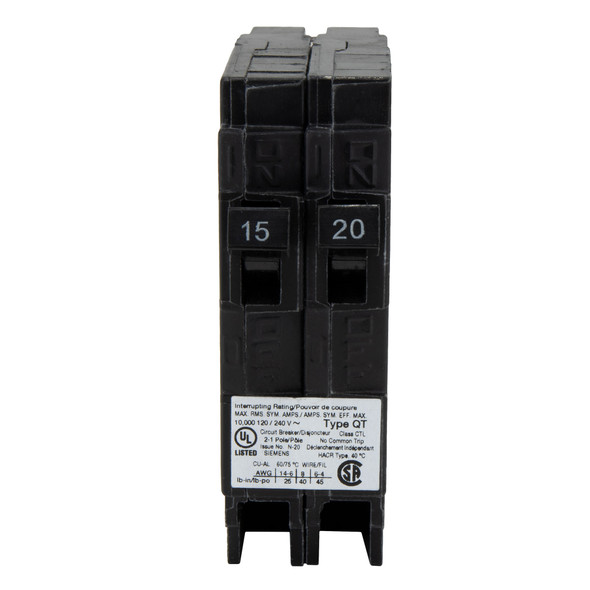Circuit Breakers
In an RV's electrical system, the circuit breakers act in a similar way to a stationary home's electrical system. A circuit breaker is a type of electrical switch that is automatically operated by the current. It's designed to protect the electrical circuit from damage that happens when a circuit becomes overloaded.
Once a fault is detected, it interrupts the electricity in the circuit. Once it interrupts the circuit and the problem is resolved, the breaker can be switched back on. Basically put, circuit breakers act as a failsafe just in case too much electricity runs through the wiring, which, left unchecked, can cause serious damage.
How Do Circuit Breakers Work?
When you use electricity in your RV, the first place the current goes to is the circuit breaker box. Here, it becomes divided into the different circuits that run throughout your rig. In places where only a small amount of electricity is used (for lights, alarm clocks, and other small items), 15-amp circuits are generally used. In places where you use more electricity, larger amp circuits are used.
Circuit breakers and wires are based on the amount of electricity that is going through the circuit, whether on a lighter circuit or on a heavier circuit. These items, the circuit breaker, the wire, and even the wire insulation, are designed to work together, however, the system that they create has limits in place. If you try and use more electricity than the wire is able to carry, then it can cause it to heat up, damaging the insulation to the point of even melting it. This is when fires start.
To keep this from happening, the circuit breaker will cut off the flow of electricity, saving the wire, the wire insulation, and your home from harm. Some homeowners will try and avoid the circuit breakers by putting a "penny in the fuse box." A modern way of doing this is replacing a 15-amp breaker with a 20-amp breaker. This is a VERY BAD IDEA, as this will make it that much easier for your electrical system and even your home to become damaged.
Types Of Circuit Breakers
There are three types of circuit breakers: standard, GFCI and AFCI. Each of these types handles the electricity differently and operates in different locations.
Standard
Standard circuit breakers monitor the flow of electricity and break the flow of electricity when it becomes too high. They are either single- or double-pole. Single-pole breakers are the most common circuit breakers used in homes. They protect one wire and supply 120V to a circuit. They can handle 15-30 amps, depending on the size of breaker, and are available in three sizes (full size, which is 1" wide, half size, which is 1/2" wide, and twin, which is 1" wide with two switches and controls two circuits).
Double-pole breakers occupy two slots on a breaker panel and protect two wires (they consist of 2 single-pole breakers with one handle and a shared trip mechanism). They supply 120V/240V to a circuit and have a range from 15-200 amps. They are required for large appliances like clothes dryers and water heaters.
GFCI
GFCI (or ground fault circuit interrupter) circuit breakers tripped when the circuit becomes overloaded or there is a fault between an electrical current and a grounded element. These breakers have a test button on the front as well as coiled wires. These are required in locations that are wet, such as kitchens, bathrooms (like hair dryers), outdoor areas, basements, and garages.
AFCI
AFCI (arc fault circuit interrupter) circuit breakers protect against unintentional electrical discharge in wiring. Once the breaker senses the electrical fault, it shuts off, protecting you from the potential damage from the electrical arc. These arc generally occur due to worn or damaged wiring and standard circuit breakers will not trip in these instances of a quick electrical surge
Tips
The first and most important tip for installing circuit breakers is that it is best left to licensed professionals. This is because of electrical code requirements and the dangers of possible electric shock. If you do conduct the installation yourself, then there are tips that could help make the process easier.
Before beginning any work in the circuit breaker box, always turn off the main breaker.
Make sure that your new circuit breaker is correct for your system. The information for your circuit should be on the panel door.
NEVER replace a circuit breaker with a higher amp rated circuit breaker. This is dangerous and could cause harm in the future.
The only reason you would add in an additional circuit breaker is if you have an open slot in the panel.
Even if the power is off, the bus bar in the electrical panel may still be hot, so make sure you're careful. The wires leading into the circuit box are also still on and should never be touched.
Once you have installed the circuit breakers, make sure to have the new electrical work inspected to make sure it's done well and meets code requirements.
AFCI and GFCI breakers should be tested monthly.
How Long Do Circuit Breakers Last?
On average, circuit breakers have a life of about 30-40 years. There are circumstances where they can last longer or shorter, though. Keeping the box in a humid outdoor location or in an environment with a corrosive atmosphere, as well as frequent tripping of the circuits, will shorten the life. Keeping the box in an indoor, dry location, without too many temperature variations, on the other hand, will extend the life of the circuit breaker.
As a general rule, though, if your breakers are over 40 years old, they should probably be replaced. If your circuit breakers are creating sparks, it is best to have a licensed electrician look at it. In the meantime, remove any flammable materials from the area. If your circuit breakers are constantly tripping, however, there are things you can do yourself.
Identify the problem-causing circuit. Look at the diagram in the inside of the panel door to find the corresponding system.
Unplug all devices from that circuit.
Reset the circuit breaker. Once all of the devices have been unplugged from the circuit, flip the breaker. (if you do this without hearing a click, then your circuit breaker has gone bad)
Remove some of your devices from the circuit before plugging the rest in to try and tackle the overloaded circuit.
If you are still having problems, call a licensed electrician to fix the problem.
Circuit Breaker Warning Signs
Burning smell in the electrical panel: If you are smelling a burning odor coming from the electrical panel, it means the wires and insulation are overheated. If the circuit breaker has not shut off, then shut off the power and call an electrician to fix the problem before any damage occurs.
The breaker will not remain reset: If the breaker does not stay reset, then this means the breaker has failed. To make sure no further damage was done, it is a good idea to check in with a licensed electrician.
Physical damage such as scorch marks: If you see physical signs of damage, such as scorch marks around the circuit breaker, outlets, or other electrical appliances, this means that the wiring has melted and is failing. If this is the case, you are in a dangerous situation and can be at risk for an electrical fire. Call an electrician immediately and get your setup looked at to avoid this risk and unplug anything that is connected to that circuit breaker.
The breakers are tripping frequently: If your breakers are tripping every time you turn on an appliance, your breaker may be outdated. To fix this, install a newer model that fits your electrical system properly.


















